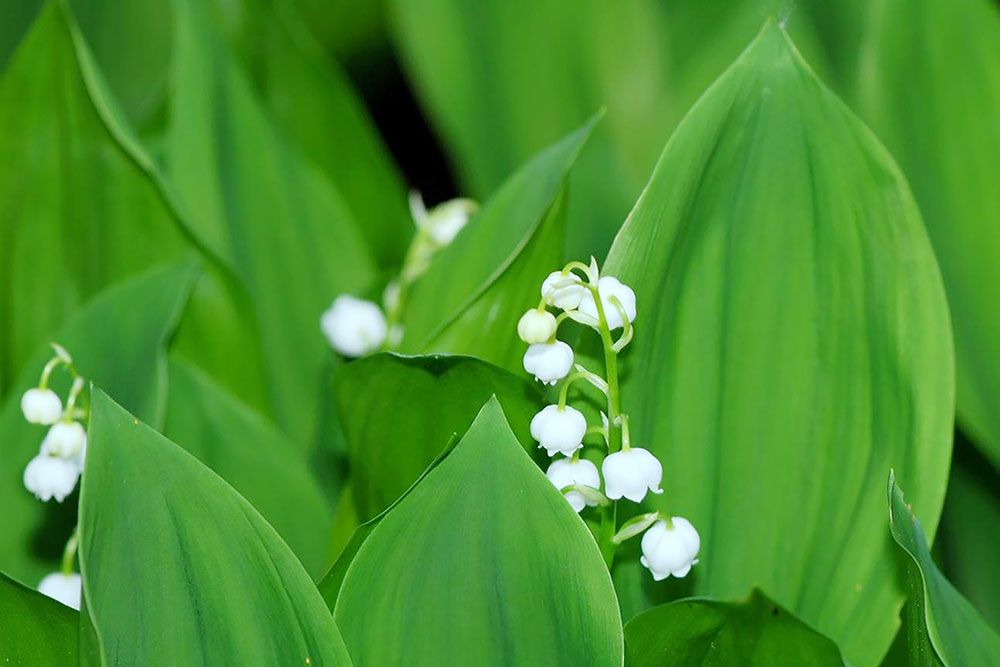This plant smells nice but it's not nice

Lily of the Valley smells beautiful but the impact of this invasive plant on native species is not so nice
By Renee Sandelowsky and Helen Varekamp
Renee Sandelowsky and Helen Varekamp are Bayfield residents and local volunteers. They are writing a monthly series of articles, for the Canadian Coalition for Invasive Plant Regulation, about the benefits of planting native species of plants and removing invasive species. This month (June 2025), their focus is the invasive plant Lily of the Valley.
Invasive Plant of the Month Feature – Lily of the Valley – Convallaria majalis
Lily of the Valley is a perennial herbaceous groundcover plant native to Asia and Europe. It needs little attention after establishing, as it grows from underground rhizomes that spread horizontally with amazing speed in either full sun or full shade. Lily of the Valley has broad, green leaves and delicate, sweet-smelling white flowers that resemble tiny bells on stalks, standing about 18 centimetres tall.
All parts of the plant are toxic and may irritate the skin. If ingested, the plant can cause abdominal pain, vomiting and irregular heartbeat.
Due to its invasive nature, Lily of the Valley forms large colonies which out-compete native species for moisture, sunlight, nutrients and space. It is found in urban parks and ravines, and more remote settings of natural woodlands of southern and central Ontario.
Lily of the Valley has low wildlife value, and our native pollinators take little interest in its nectar and pollen.
If this plant brings back wonderful memories and you cannot bear to give it up, try this:
Take one small clump and place it in a pot, so it is contained and cannot travel. When the flower is spent, cut it back, so it will not go to seed.
How to manage Lily of the Valley
Managing Lily of the Valley is challenging but achievable with persistence and a multi-step approach:
Manual Removal
For small populations, dig up the plants and roots before they set seed, and remove manually. You may need to do this for several years before the seedbank in the soil is depleted and because even small pieces of rhizome can re-grow. Alternatively, cut the plants back weekly with a lawnmower. This will prevent seeds from developing and may eventually kill the plants. Do not put the plants in the compost or municipal green waste.
Smothering:
Another option for small or larger populations is to cover infested areas with tarps or cardboard to block sunlight. This can be started any time of year and the process can take up to two years to complete. Check progress each season.
Herbicide Treatment:
Difficult to reach, or large areas may be treated by herbicide. Use herbicides only as a last resort, following provincial and local regulations to minimize environmental harm.
After removal, replant the area with regionally appropriate native plants. This step is essential to prevent reinfestation and to restore ecosystem health. Native plants will also attract pollinators and wildlife, improving biodiversity in your garden.
A good choice, as an alternative, would be Foamflower – Tiarella cordifolia
Learn more and take action
Education is key to combating invasive plants. Learn to identify invasive species and choose native or non-invasive alternatives for your garden. Focus on managing one or two invasive plants at a time and be patient – successful eradication takes time and persistence.
To learn more, visit:
- Ontario Invasive Plant Council
- Canadian Coalition for Invasive Plant Regulation
- Grow Me Instead Guide